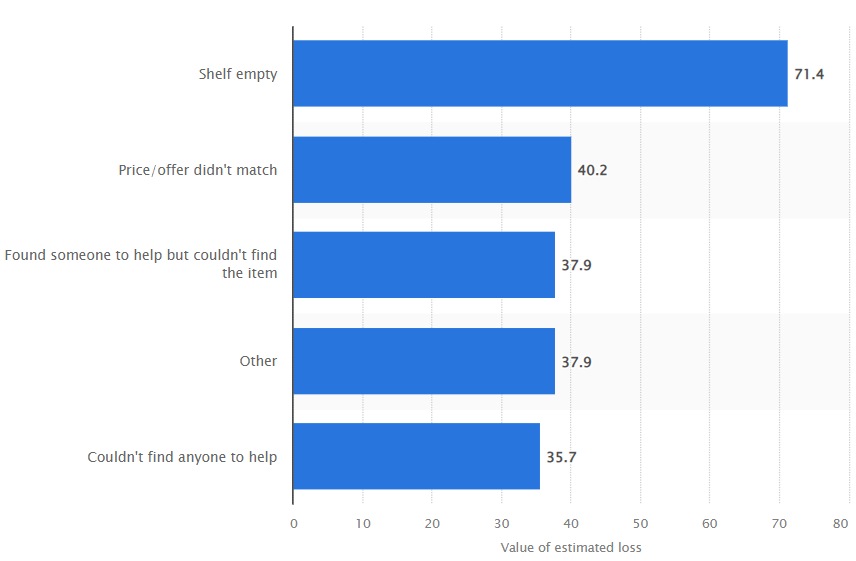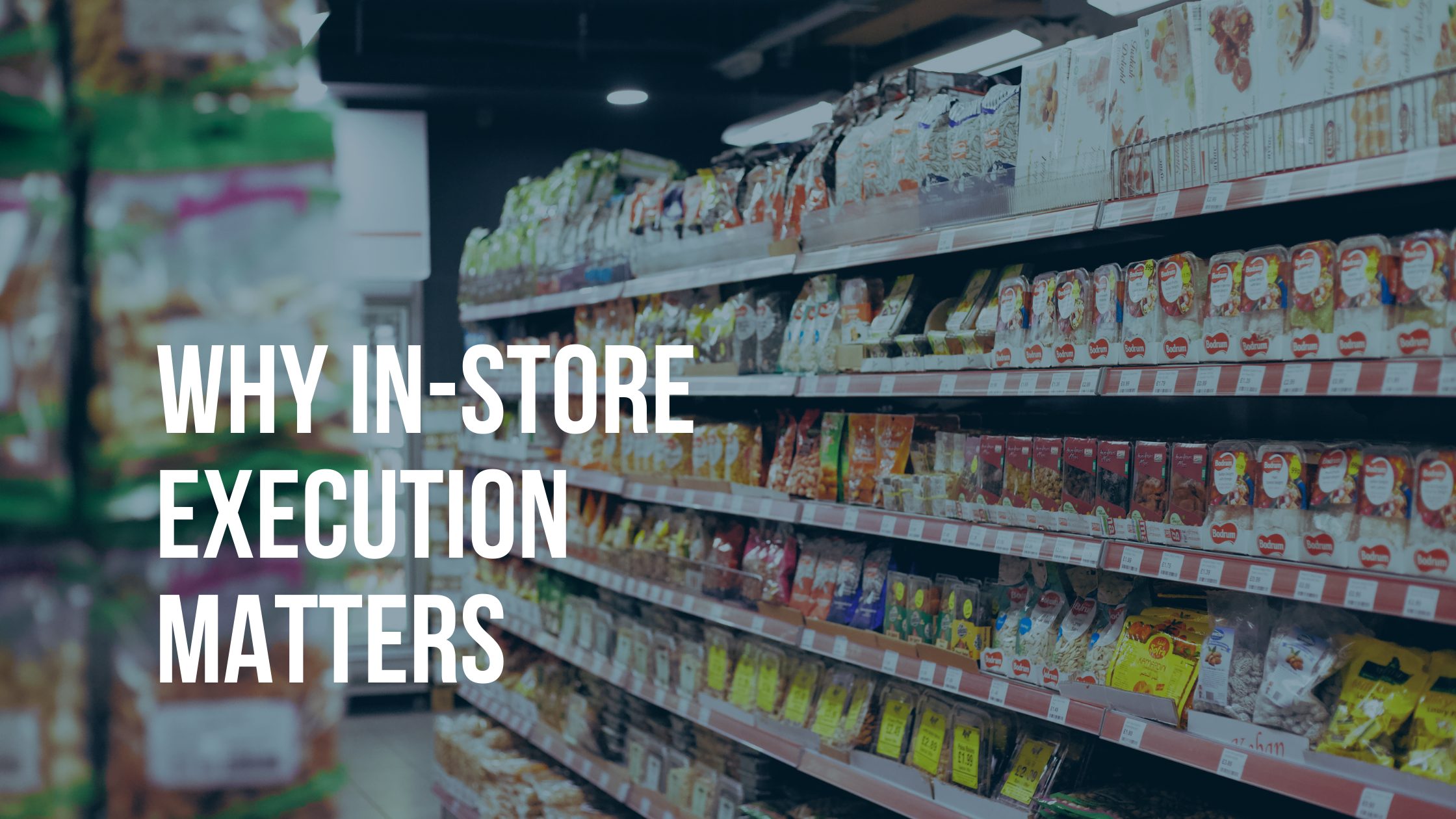Despite an increasingly online world, in-store retail purchases are still thriving, making in-store execution crucial to suppliers’ success. Merchandising partners, like Retail Merchandising Services (RMS) can help brands make sure that their in-store inventory is stocked, set, and priced correctly to maximize sales.
Why engage a third-party merchandiser though?
Shouldn’t the inventory be taken care of as part of the retail agreement? Yes, to some extent. However, there are many more steps and opportunities for lost sales than one might expect. Perhaps most alarmingly for retail suppliers is that the average retailer execution rate (with no third-party help) hovers around 40%. And that was pre-pandemic. Imagine, only 40% of your expensive endcap displays get set correctly.
Keep reading to discover why this challenge persists and how suppliers can overcome it to make sure they meet their sales targets.
The Problem: When In-Store Execution Falls Short
Retail brands face a massive challenge once their inventory hits their retail partner’s backroom. There is simply not enough labor to ensure that every item gets set correctly. We are not here to point fingers. Retail employees are working every day to make sure inventory gets the love that it deserves once it’s in the store. However, there are too many items and too few hands to properly account for everything.
These problems have existed for years but with the pandemic, the labor shortage has become increasingly pressing, with retailers and the brands that sell at them experiencing dipping execution rates.
Retail workers are quitting at above-average rates, even compared to the massive labor shift across all industries, with 4.4% of the retail workforce having quit recently. And retailers aren’t having much luck backfilling the shortage. So is it any surprise that execution rates are less than what they were?
The challenge is bad enough on store shelves but what about when you’ve invested heavily into end caps and other displays? Having a messy, understocked display not only reduces the number of sales you’ll make; it’s also doing damage to your brand.
Let’s explore some of the other impacts of poor in-store execution.
Take a look at the chart below.
An empty shelf is by far the leading cause of lost sales.
Main Causes of Lost Sales in the Retail Industry (in billion U.S. dollars)

Not only does a brand miss out on a sale when a customer can’t find what they’re looking for, but they also risk losing that customer for life.
Why wouldn’t that customer just switch once and then come back to their original choice?
Well, now they’ve had a poor brand experience with your brand and are frustrated. This could leave a sour taste in their mouth and make them think twice about buying from you again. And secondly, now they’ve been given an opportunity to try the competition. What if they find they like it more? Whether it’s a better price, quality, or value, you never want to risk losing a life-long customer because of a simple out-of-stock.
Differentiation: Why Standing Out Matters More than Ever
But we can’t just talk about what happens when things go wrong. What about when things go according to the status quo and it’s still not enough?
That’s where differentiation comes in.
Brands have to compete for customers’ fleeting attention spans. That means in-store marketing and visual merchandising. Make sure that there are coupons and bright colors and something about your product that screams, “pick me! I’m the best!”
40 – 80% of all purchases are impulse buys. Even at the low end of that range, that’s an enormous amount of sales that depend on product and displays being visually appealing enough to attract those last-minute decisions.
The Solution: Merchandising Partners
While in-store retail execution rates vary from store to store and day-to-day, adding a third-party retail merchandiser like us can increase execution rates by 40 – 50%.
What can a retail merchandising partner help brands with?
Retail merchandisers provide suppliers with many services, including:
- Endcap and display management: make sure that your displays look the way they’re supposed to
- Instant redeemable coupons (IRCs): draw customers’ eyes with attention-grabbing coupons
- In-store marketing execution (ISM) and Maintenance: increase sales by as much as 20% by differentiating yourself from the competition
- Planogram maintenance: don’t let the point of sale be the reason you miss a purchase
- Reset and revision audits: as new planograms are only compliant 50% of the time, this is a crucial service for any supplier
- And more!
Don’t let your inventory sit or get lost in the shuffle. Make sure your inventory gets all the attention it deserves. Partner with a retail merchandiser to be confident that your in-store strategy is executed on and your sales are maximized.

